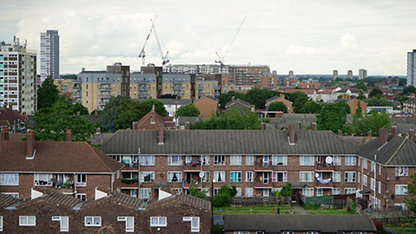Recent guidance given by the Health and Safety Executive (HSE) regarding the Reporting of Injuries, Diseases and Dangerous Occurrences Regulations 2013 (RIDDOR) with respect to COVID-19 may have given some comfort to employers concerned about reporting obligations. It does not, however, remove the need for careful examination of the facts in each case to understand whether a relevant reporting obligation under RIDDOR has arisen.
As with much in health and safety, there is no one-size-fits-all approach. Instead, a measured and evidence-based approach is essential to assist the duty holder to decide whether something should be reported or not.
Not all infections are an employer's responsibility under health and safety law because an infection may just as likely be caught outside the workplace as in it. That is particularly so with a pandemic such as COVID-19, which is affecting vast swathes of the global population. Despite this fact, that does not mean when COVID-19 appears in the workplace it does not need to be reported to the HSE or other relevant regulators. Equally, it would be an over-simplification to adopt the position that all cases of COVID-19 among workers must be reported under RIDDOR.
Examples given in the guidance anticipate that the majority of COVID-19-related RIDDOR reports will arise in the care sector, or within a healthcare or a scientific research context, where it can more readily be established that a dangerous occurrence or disease was work-related. That does not mean, however, that a reportable instance could not arise in another sector, for example, the construction, facilities management, retail, waste or transport sectors. In each case, difficult decisions will need to be made about whether a particular incident is reportable.
For example, there could be a first aider on a construction site tasked with providing first aid to the workforce as and when required and in circumstances where close physical contact is necessary. If the first aider is subsequently diagnosed with COVID-19, would that be reportable as an occupational disease? What about work being carried out in and around care homes or hospitals? In all cases there can be no definitive answer without an examination of the surrounding facts.
As is often the case with RIDDOR, the judgment as to whether a case of COVID-19 is reportable might be a finely balanced one, not least because the consequences of making a mistake could be serious. Failure to report a case which meets the legal threshold may constitute a criminal offence which carries the potential for an unlimited fine. Conversely, over-reporting – reporting in circumstances where the legal obligation had not arisen – could give rise to unnecessary regulatory scrutiny or investigation and distorted reporting statistics.
The HSE is understandably keen to avoid anxious over-reporting in an environment where the actual source of infection may be very difficult to pinpoint. The Office of Rail and Road has gone so far as to say that it ‘is working on the assumption that, with widespread societal spread, very few cases will need to be reported under RIDDOR’. With health and safety obligations unchanged by the onset of a pandemic, however, duty holders must be mindful of the strict letter of the law.
RIDDOR requires the 'responsible person', essentially the employer or, for the self-employed or others, the person in control of the workplace, to report a variety of work-related events. To ensure compliance with RIDDOR while also avoiding an unnecessary report, the responsible person must first understand the potential triggers for the reporting obligation to arise. Then they must examine the facts of each case carefully to determine whether each limb of the relevant threshold has been met.
Relevant obligations
The government has added COVID-19 to the list of notifiable causative agents under the Health Protection (Notification) Regulations 2010. In addition, under the Control of Substances Hazardous to Health Regulations 2002, the HSE’s supplementary list of defined agents identifies Coronavirus as a biological agent. Consequently, in relation to COVID-19, there are three potentially relevant obligations:
- the requirement to report any dangerous occurrences, which includes any accident or incident which results or could have resulted in the release or escape of a biological agent likely to cause severe human infection or illness (Regulation 7 (schedule 2, paragraph 10))
- the requirement to report a diagnosis of any disease attributed to an occupational exposure to a biological agent (Regulation 9(b))
- the requirement to report work-related fatalities (Regulation 6(2)) which result from exposure to COVID-19, principally by way of the incidents mentioned above.
- In the guidance the HSE indicates that a RIDDOR report in respect of the above must only be made in the following circumstances:
- ‘…an unintended incident at work has led to someone’s possible or actual exposure to Coronavirus. This must be reported as a dangerous occurrence.’ An example would be a lab worker accidentally smashing a glass vial containing Coronavirus, which results in – or could result in – its release or escape.
- ‘…a worker has been diagnosed as having COVID-19 and there is reasonable evidence that it was caused by exposure at work.’ This must be reported as a case of disease. An example would be a health care professional who is diagnosed with COVID-19 after treating patients with COVID-19 where they were likely exposed.
- ‘…a worker dies as a result of occupational exposure to Coronavirus.’
The question of when or whether to report a COVID-19 incident is complicated by the novel nature of the pandemic. To better understand this, it is important to emphasise two elements of the reporting requirement. Firstly, there must be a written medical diagnosis of COVID-19 before the reporting obligation under Regulation 9(b) arises. In the absence of mass testing, diagnosis of the kind which is required by RIDDOR is unlikely to exist in the majority of cases. Currently, without such a diagnosis, the reporting threshold will not be met, regardless of whether a suspected case of COVID-19 appears to be work-related. The HSE has recently updated its guidance on this, however, to reflect the fact that many cases of COVID-19 are currently being confirmed without a registered medical practitioner’s written diagnosis, for example, on the basis of laboratory test results. The HSE has decided to adopt a pragmatic approach in the current highly unusual circumstances and not require those results to be confirmed by a registered medical practitioner before a report is made under RIDDOR. Accordingly, its guidance now states that responsible persons should consider any official confirmation of COVID-19 infection such as from a public testing body as being equivalent to a registered medical practitioner’s diagnosis.
Secondly, the requirement to report does not arise simply by virtue of an instance of COVID-19 appearing in work premises or because someone had been at work in the period prior to any potential exposure to, or diagnosis of, COVID-19. There must be a nexus or likely link between the dangerous occurrence, disease or death and the work activity or environment that was in existence at the time; work-related requires more than simply being at work. Quite what this means in practice will, however, depend on the facts in each case.
A forensic analysis of the available evidence regarding the nature and method of the work that was being carried out at the time by the people in question is the best way to make these difficult judgment calls. Relevant factors are likely to include:
- the extent of the affected person’s contact with others
- whether social distancing of 2m or more was possible and implemented consistently
- the extent to which the employer was able to follow Public Health England or other industry guidance
- the availability of hand washing facilities, appropriate signage and adequate personal protective equipment
- whether any training was needed and provided
- whether there is evidence that people displaying symptoms of COVID-19 had been in the workplace.
Particular care needs to be taken to ensure risk assessments are regularly reviewed to take account of the developing situation and public health guidance on the pandemic and its associated risks, and that control measures are updated in line with it, making sure that these are effectively monitored. On construction sites, for example, regard should also be had to specific industry guidance. Considerations will include changes to:
- welfare facilities to allow social distancing and increased hand washing
- site movement, perhaps enforcing a one-way system
- site markings and signage reminding of distancing
- methods of working to minimise touch transfer onto materials.
Additional considerations will include arrival and departure facilities, changes to car parking or site transport, and additional controls on access to sites for workers and deliveries to avoid crowding. In Scotland and Wales, regard must also be given to specific coronavirus statutory duties which require all 'reasonable measures' to be taken to ensure social distancing on construction projects.
Where the need to submit a RIDDOR report is being scrutinised, careful consideration and documentation of the facts, and the ultimate reporting decision, is advisable. Recording the reasons why a report was not submitted may prove a worthwhile exercise if any questions are asked by regulators later on.
- Kevin Bridges is a partner and head of health and safety at Pinsent Masons LLP: kevin.bridges@pinsentmasons.com














